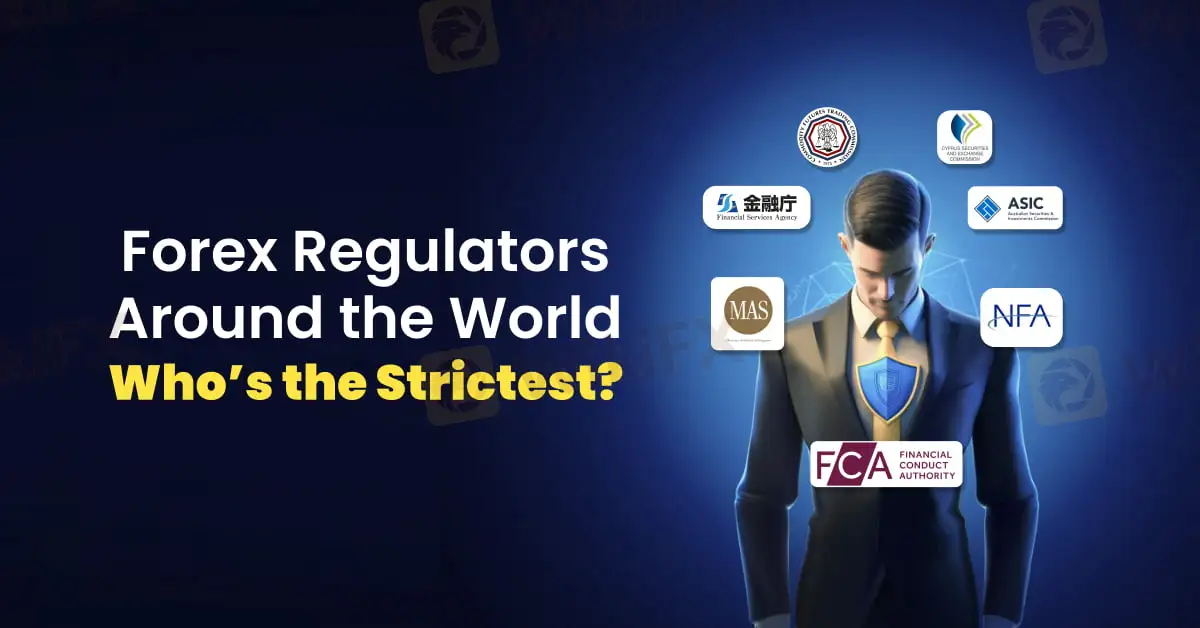简体中文
繁體中文
English
Pусский
日本語
ภาษาไทย
Tiếng Việt
Bahasa Indonesia
Español
हिन्दी
Filippiiniläinen
Français
Deutsch
Português
Türkçe
한국어
العربية
Forex Regulators Around the World: Who’s the Strictest?
Abstract:Forex trading takes place in markets all over the world. Regulators in different countries oversee brokers to ensure fair practices and protect traders. However, not all regulators are the same. Some have much stricter rules than others. Continue reading to discover the most trusted regulators in the financial sector.

Forex trading takes place in markets all over the world. Regulators in different countries oversee brokers to ensure fair practices and protect traders. However, not all regulators are the same. Some have much stricter rules than others.

The Financial Conduct Authority (FCA) in the United Kingdom is known for its high standards. It requires brokers to follow strict guidelines on transparency and financial security. Brokers must separate client funds from company funds. This ensures that traders money is safe even if the broker goes bankrupt. The FCA also imposes limits on leverage to reduce trading risks.
Australias regulator, the Australian Securities and Investments Commission (ASIC), also has a strong reputation. ASIC enforces rules to protect traders from fraud and malpractice. Brokers under ASIC must meet strict capital requirements. They are also required to provide clear information about fees and risks.
In Europe, the Cyprus Securities and Exchange Commission (CySEC) is a major regulator. It oversees many brokers because Cyprus is a popular base for financial firms. CySEC follows European Union regulations, which are quite strict. These include limits on leverage and rules to prevent conflicts of interest. CySEC also has measures to compensate clients if brokers fail.
The United States has some of the strictest forex regulations. The Commodity Futures Trading Commission (CFTC) and the National Futures Association (NFA) oversee forex brokers. They have very high capital requirements. Brokers must hold at least $20 million to operate legally. Leverage is also heavily restricted in the US. This is to protect traders from high-risk positions.
In Asia, the Monetary Authority of Singapore (MAS) is a leading regulator. MAS ensures that brokers meet strict financial and operational standards. It also requires brokers to protect client funds and provide fair trading conditions. Singapore is considered a safe place for forex trading because of these measures.
Japans Financial Services Agency (FSA) is another strict regulator. It imposes very low leverage limits, which helps to reduce risks for traders. Brokers in Japan must also follow detailed rules to ensure transparency and fairness.
Some countries, however, have weaker regulations. Brokers in these regions may not offer the same level of security. Traders should be cautious when dealing with brokers from such jurisdictions.
Strict regulators play an important role in the forex market. They help to maintain trust and protect traders from fraud. When choosing a broker, it is important to check their regulatory status. A broker regulated by a well-known authority is often a safer choice.
The strictest regulators set high standards for the industry. They make sure brokers operate responsibly and protect their clients. Traders should always prioritise safety and transparency when selecting a broker. By choosing a broker regulated by a trusted authority, traders can trade with confidence.

Disclaimer:
The views in this article only represent the author's personal views, and do not constitute investment advice on this platform. This platform does not guarantee the accuracy, completeness and timeliness of the information in the article, and will not be liable for any loss caused by the use of or reliance on the information in the article.
Read more

Reviewing CFreserve - Regulation Status, Operation Period & More
Has CFreserve deceived you financially? Did you face problems regarding forex investment withdrawals with this broker? You’re not alone! Read this exposure story to know how it's duping investors.

Trading 212 Expands German Footprint with New Berlin Office
Trading 212, a leading Forex trading broker, strengthens its presence in Germany with a new Berlin office. Discover how the platform is shifting focus from CFDs to stockbroking and tax-efficient savings.

Fake FX Investment Scheme Cost Malaysians RM3.9 Million
38 Malaysian investors have come forward alleging they were deceived by a fraudulent foreign exchange (forex) investment scheme, resulting in collective losses exceeding RM3.9 million.

Promised RM2 Million, But Lost Nearly RM800K
A 47-year-old Malaysian woman has suffered a devastating financial loss of RM794,000 after falling victim to a fraudulent online investment scheme that promised to double her returns.
WikiFX Broker
Latest News
MetaTrader Support Ending July 2025: Update Now or Risk Losing Access
HYCM Broker Review 2025: A Comprehensive Overview
FXGT.com Trading Platform Review 2025
Interview with ATFX Latin America Leader: Rebuilding Trust in the Forex Industry
Saxo Bank Broker Offices: Full Validation Guide 2025
Global Stablecoin Regulation Enters New Phase as U.S. Senate Approves Landmark Bill
From Wall Street to Web3: Coinbase and Others Eye Stock Tokenization
Dukascopy Enhances Forex Trading Platform with 303 New Instruments
FXTM Launches New Client Promotion in Malaysia
OneRoyal Expands to Oman, Strengthening Forex Trading in MENA
Currency Calculator


